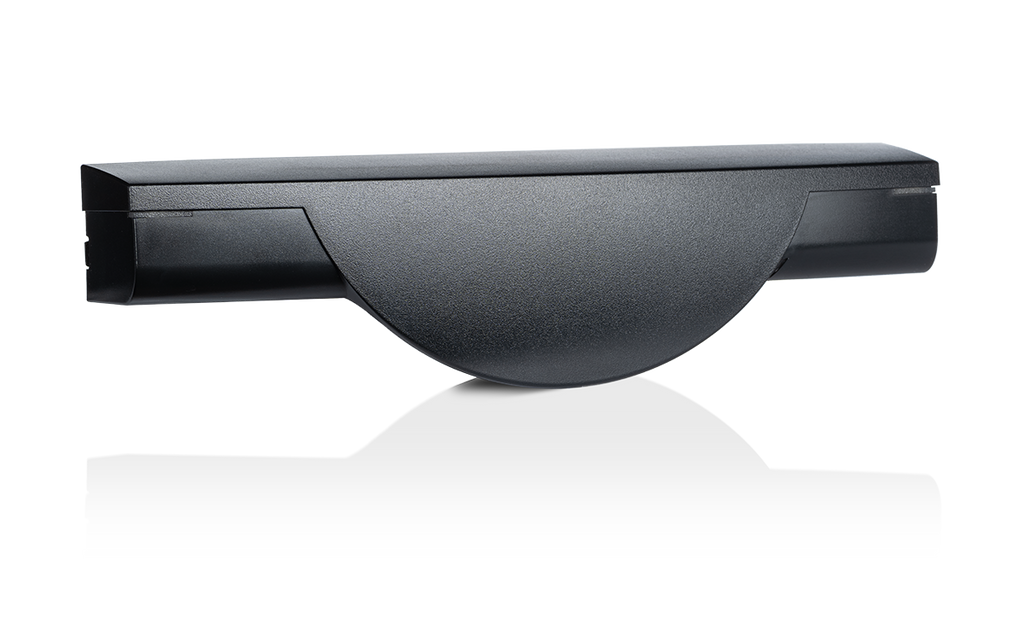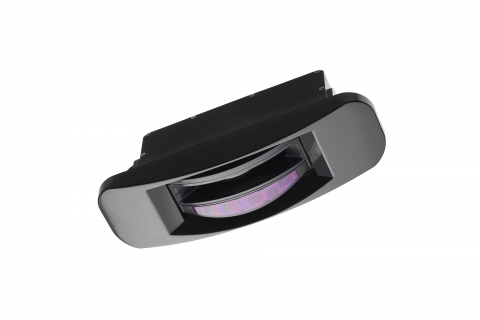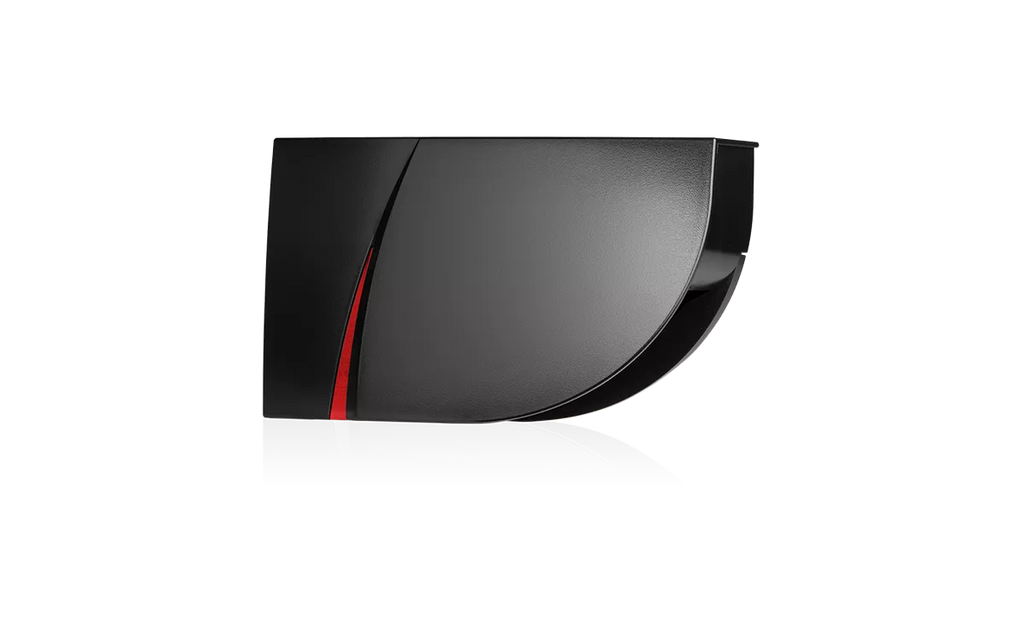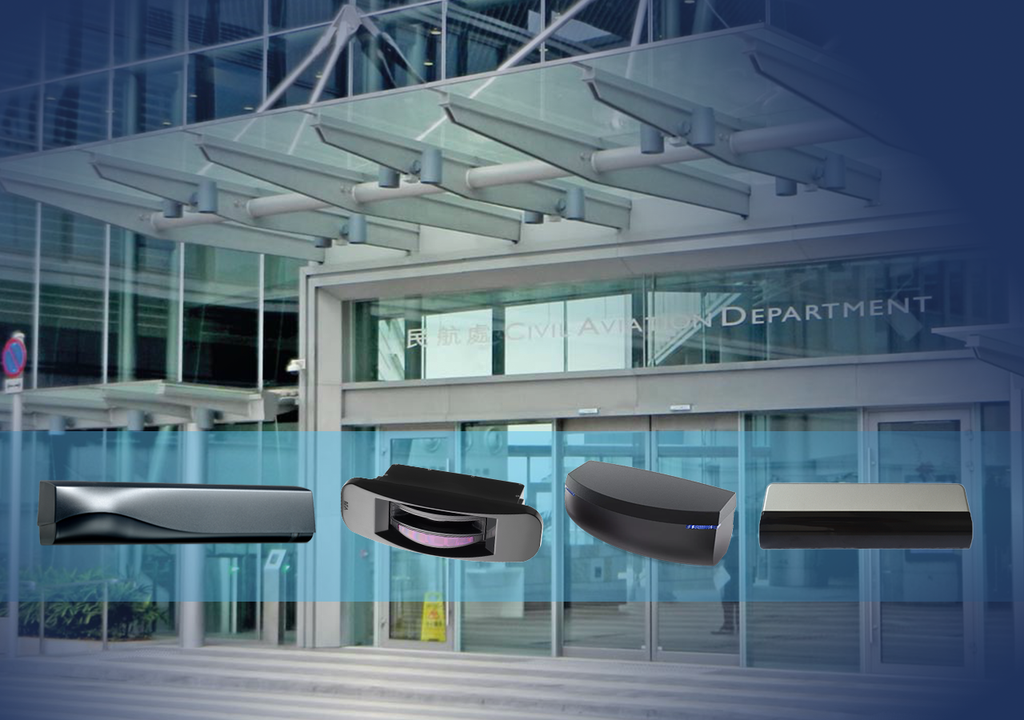BEA Sensor Solutions & Application Cases for Hospital Automatic Doors
The Hospital Operational Environment
As a vital hub for medical services, a hospital operates in a highly dynamic and complex environment. There is constant human traffic throughout the hospital facility, from patients and medical staff to visitors and various support personnel. This environment has high demands for convenience and safety of access, especially when it comes to automatic doors. At the same time, hospitals must maintain exceptionally strict hygiene and sterility standards, particularly in critical areas such as operating rooms and intensive care units, where even minor bacterial contamination can lead to serious consequences.
Requirements and Solutions for Automatic Doors in Hospitals
In the daily operation of hospitals, automatic doors are not only a convenience for passages but also a crucial element in ensuring safety and hygiene condition.
Requirements for Hospital Automatic Doors
-
Safety Passage: Automatic doors must provide a high level of safety to prevent collisions or injuries during the opening and closing process. With a high number of patients with limited mobility and medical staff transporting hospital beds, ensuring safe passage is vital for life and health.
-
Sterile Access: Automatic doors in hospitals must meet stringent hygiene standards. Touchless opening is key to reducing the risk of cross-infection, especially in areas such as operating rooms and clean rooms, the contactless opening and closing function has become a necessity.
-
Convenient Access: Automatic doors should be equipped with smart opening sensors for automatic opening and closing to provide a convenient passage experience for patients with limited mobility, medical staff, and visitors. They should also ensure safe and smooth passage of people using wheelchairs and stretchers.
How to Select Sensors for Hospital Automatic Doors?
In the deployment or upgrade of automatic doors in hospitals, selecting the appropriate sensors is a crucial consideration. BEA Sensors, which has been deeply involved in the research and development as well as the manufacturing of sensors for over 60 years, has leveraged its continuous technological accumulation and innovative iteration to provide a comprehensive series of sensor solutions specifically tailored for hospital automatic doors. This helps create a safe, efficient, and convenient hospital passage environment.
Touchless Sensors
Magic Switch Chroma is a touchless automatic door sensor that allows users to simply wave their hands to trigger the automatic door’s opening. This significantly reduces touch points within the hospital, effectively minimizing the risk of bacteria and viruses being transmitted via door handles. Additionally, the sensor’s antimicrobial front cover design helps inhibit the growth of bacteria, fungi, and microorganisms, further ensuring the hygiene of the hospital environment.
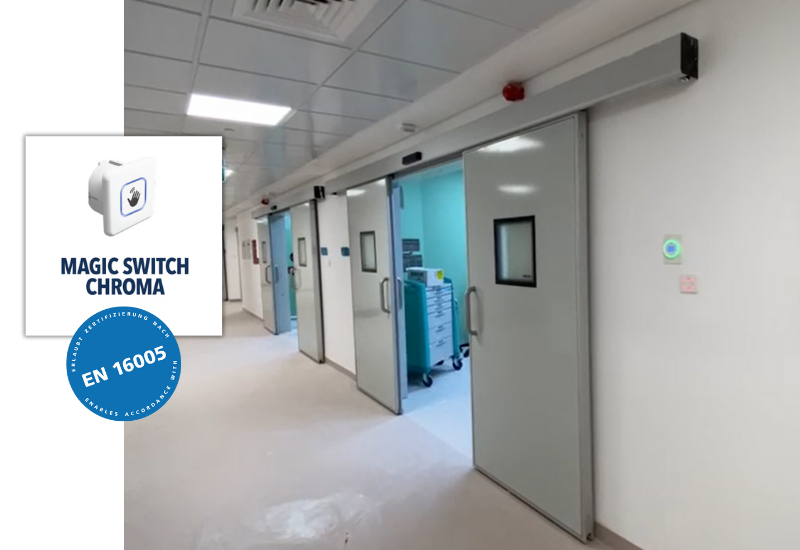
Magic Switch Chroma at a Dubai General Hospital
Motion & Safety Sensors
The ORASCAN Multifunctional Sliding Door Sensor integrates opening, safety protection, and virtual switch functions into a single unit. Its laser safety curtain fully covers an area matching the height, width, and depth of the door leaf, ensuring overall safety coverage in front of and alongside the door. Additionally, ORASCAN can be configured with up to four virtual buttons for touchless on-demand automatic door activation, making it ideal for hospital environments.
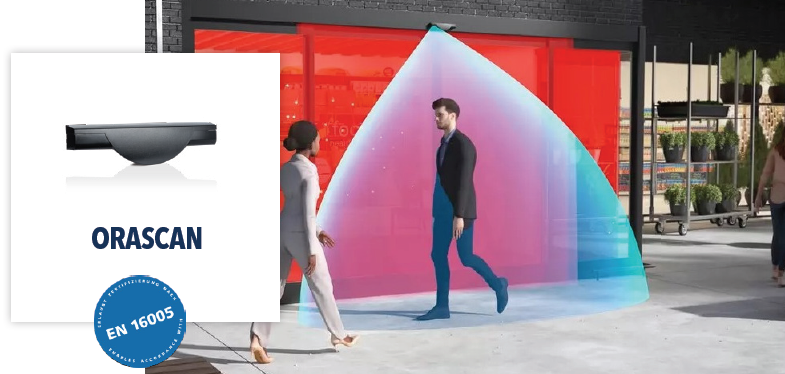
Application of Orascan
IXIO D 2-in-1 Sensor combines microwave and infrared technology for the activation and safety protection of automatic sliding doors. It provides users with a convenient and secure passage experience. Over the past decade since its release, it has ensured safe and easy access for patients and healthcare professionals in numerous hospitals worldwide.

IXIO D at KK Women’s and Children’s Hospital, Singapore
LZR®-FLATSCAN SL Multifunctional Laser Sensor for automatic sliding doors uses 400 laser points to provide comprehensive, high-precision, large-area safety protection. Users can also flexibly configure two virtual buttons for touchless door activation, making it especially suitable for hospital environments that demand strict hygiene standards.
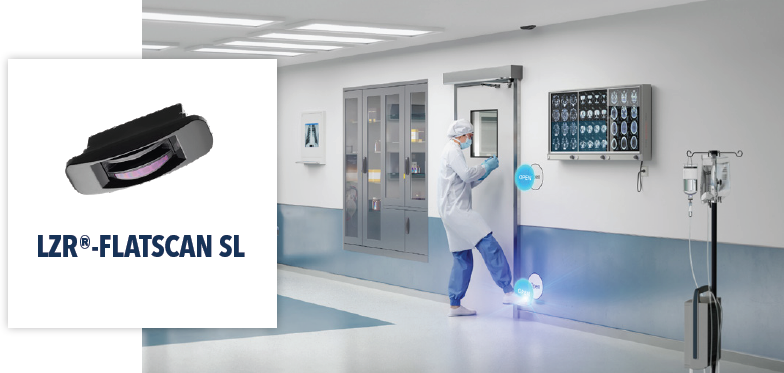
FLATSCAN SL Hospital Application
FLATSCAN 3D SW Swing Door Safety Sensor emits 700 measurable laser points, allowing precise detection of people or objects in the door leaf’s movement path, ensuring safe passage. When someone approaches the automatic door, the sensor keeps the door open until the person has completely passed, avoiding accidents caused by unexpected doors closure. Its anti-pinch protection in the hinge area is particularly suited for hospitals, where there are many children and individuals with limited mobility. Additionally, users can set one or two virtual buttons to enable touchless automatic door activation.
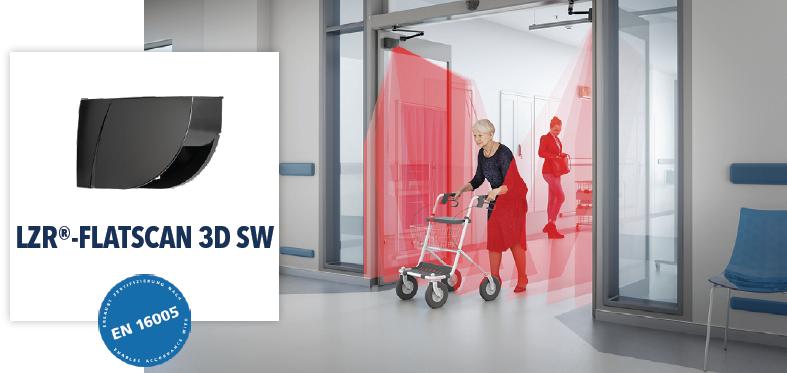
Application of FLATSCAN 3D SW
Energy-Saving Sensors
Several BEA’s sensors consist of unidirectional detection capabilities, such as the IXIO D and ORASCAN, that only open the automatic doors when there is a need for passage. They effectively filter out movements parallel to the doors, reducing unnecessary openings. Additionally, these sensors can detect and recognize when a person is moving away from the automatic doors, allowing the doors to close more promptly. This helps to minimize the loss of airflow caused by door openings and improves energy efficiency.
Moreover, ORASCAN eliminates the need for additional holding time during the closure of automatic doors thanks to the extensive safety protection, which also provides the ability to ignore impact of changes in the surrounding environment on the automatic doors. This further reduces the exchange of airflow between the interior and exterior environment, not only extending the lifespan of the automatic doors but also helping hospitals in reducing overall operational costs.
Successful Cases of BEA Sensors in Hospitals
At present, tens of thousands of BEA sensors are operating on automatic doors in numerous hospitals and medical institutions worldwide. They are effectively blocking the spread of bacteria and viruses, safeguarding the hygiene of hospital environments and public health, while providing convenience and safety for passersby.
BEA Sensor Hospital and Nursing Home Case Studies
Case 1: Automatic Door Retrofit Project at a Tertiary Class-A Hospital in Central China
In 2020, BEA collaborated with an internationally renowned automatic door manufacturer to jointly implement the retrofitting project for the manual swing doors at the entrance and exit of a super-large tertiary class-A hospital in Central China. The project involved the automation upgrade process of nearly a hundred manual swing doors.
Considering the high pedestrian traffic density in the hospital environment and the strict safety protection requirements for the elderly, children, and people with disabilities, the owner ultimately selected BEA’s top-tier safety protection solution for swing doors, the LZR-FLATSCAN SW laser scanning safety sensor. Its comprehensive door leaf protection features, along with its hinge anti-pinch functionality, work seamlessly with the automatic door system to ensure the safety of pedestrians in the hospital.

Application of BEA FLATSCAN SW at a Tertiary Class-A Hospital in Central China
Case 2: Hong Kong Infection Control Centre, North Lantau Hospital
The Hong Kong Infection Control Centre North Lantau Hospital, which was completed at the end of January 2021, features entirely MiC (Modular Integrated Construction) negative-pressure isolation wards equipped with contactless interlocked airtight doors. BEA sensors have contributed to creating a safe and hygienic passage environment.
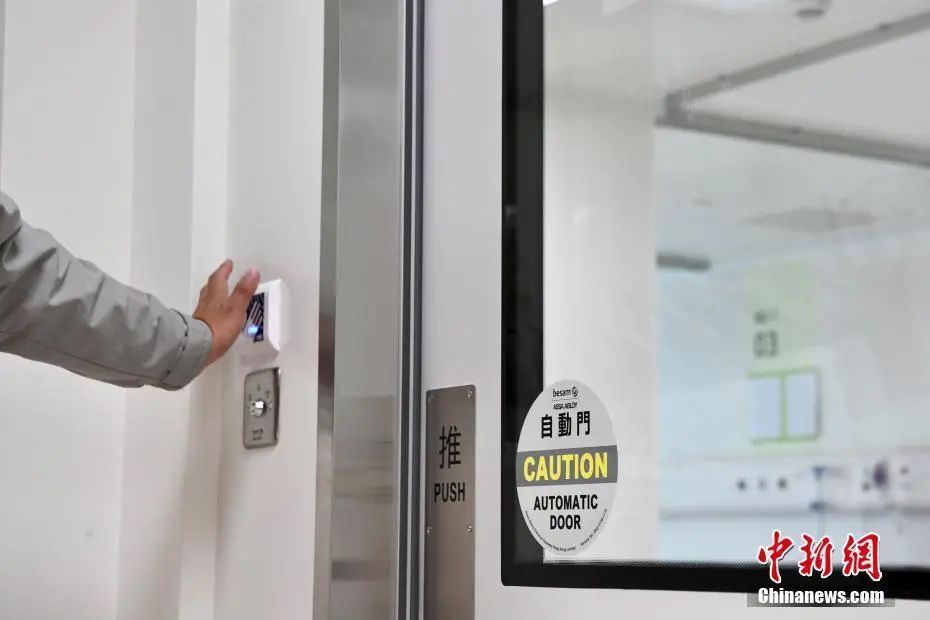
Magic Switch in North Lantau Hospital (Source: www.ecns.cn)
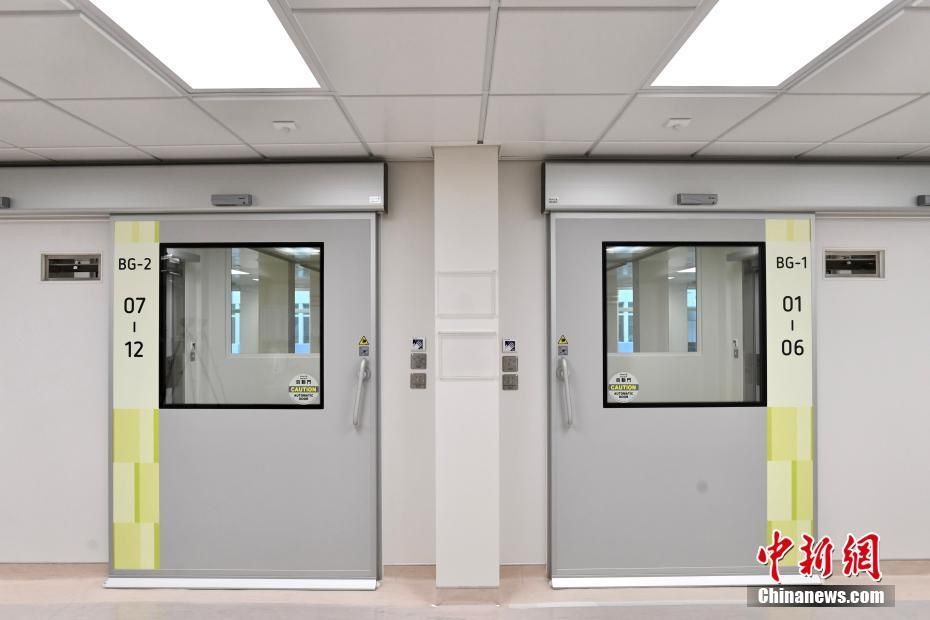
Magic Switch + IXIO-S in North Lantau Hospital(Source: www.ecns.cn)
Leveraging the advantages in contactless activation and safety protection, BEA sensors comprehensively enhance the hospital passageway with an intelligent sensing experience. They meet the requirements for hygiene and safety, while providing patients, medical staff, and visitors with a more convenient, comfortable, and secure passage environment. At the same time, BEA sensors help hospitals improve operational efficiency and achieve efficient energy-saving, making them the “undisputed choice” for hospital automatic doors upgrades.


